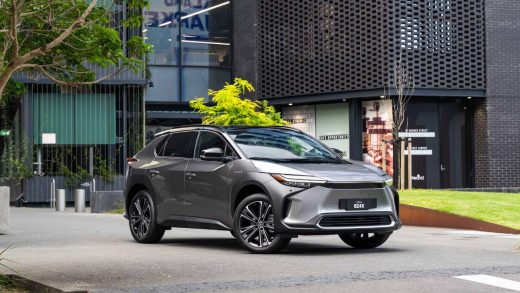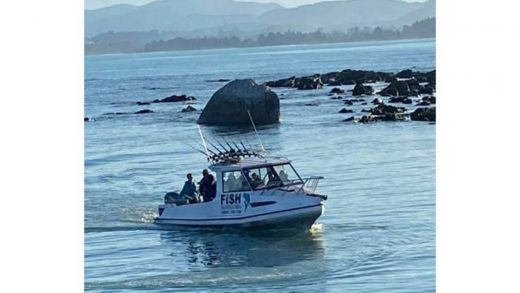
Supplied
An artist’s impression of the Gore District Council’s $3.7 million cable-stay design bridge, which was planned as part of a $10.8 million project to carry water pipelines from the East Gore plant to the Jacobstown wells. The Environment Court overturned resource consents to build the bridge, and has now awarded costs to a group that opposed it.
The Gore District Council has been ordered to pay more than $15,000 in costs to a group that opposed its plans to build a bridge across the Mataura River.
In a decision about costs, which was released last month, Judge Prudence Steven ordered the council to pay $15,373 to the Waimea Plains Landscape Preservation Society (WPLS).
The Society had sought costs of more than $30,000, but Judge Steven said she was unwilling to grant an award that was higher than normal.
The matter was not unnecessarily lengthened by the council’s conduct and awarding 70% costs would be a burden on local taxpayers, she said in the decision.
READ MORE:
* Cost for Gore bridge, which will never be built, more that $900k
* Judge declines consents for controversial Gore bridge
* Gore District Council critical of bridge opponents in Annual Report
* Preservation Society chairman: benefits of Mataura River bridge ‘conflated’
WPLS chairperson David Gray said the society was ‘’really pleased’’ with the decision.
”It vindicates our stance to oppose the bridge being built and in my personal opinion it’s a damning condemnation of the council.’’
The group was opposed to the bridge being built because of the lack of consultation, the impact on residents’ views and privacy, and the fact the bridge was out of character for the semi-rural setting where it was proposed to be built.
“Well over $1m has been spent and in effect wasted,’’ he said.
Council chief executive Steven Parry said the winner of a civil proceeding was usually entitled to costs.
“In this instance, the Society was awarded a sum considerably less than it sought, but the council overall considers that was a fair outcome.”
In the decision about costs, Judge Steven said she agreed with the Society that the council’s conduct at times was detrimental, alongside its decision to put forward a proposal with significant adverse visual amenity effects.
She also accepted the society’s submission that the council made last-minute attempts to rectify its evidence to the detriment of the society.
Kavinda Herath/Stuff
Waimea Plains Landscape Preservation Society members Rob Bell, David Bone and Lynn Gray launched a balloon to show the height of the Gore District Council’s proposed bridge in June 2020. (File photo)
In response to an Official Information Act request, council chief executive Stephen Parry told Stuff in April that the council’s total cost for the Longford Cycling and Walkway Bridge was $901,420.
The council also bought a 22.8ha block of land for $575,000 to the north-west of the site of the proposed bridge, which was now being leased.
The decision draws the saga of the council’s plans to build the Longford Bridge to a close after two years of petitions, resource consent hearings and court cases.
The council announced its plans to build a $3.7m cable-stay bridge across the river in 2020. It would have been the longest and tallest structure of this type in New Zealand at 39m high and 90m long.
Rachael Kelly/Stuff
Independent commissioners Bonnie Mager, Dean Chrystal and Reginald Proffit listen to evidence at a hearing into the Gore District Council’s resource consent application to build a bridge across the Mataura River. They granted consent for the bridge to be built, but that was later overturned by the Environment Court. (File photo)
The bridge was to be a single-span pedestrian and cycle crossing, carrying new water pipelines linking Gore and East Gore as part of a $10.7m upgrade of the council’s East Gore water treatment plant.
Waka Kotahi NZ Transport Agency was funding 55% of the cost of the bridge.
But residents living near the site of the proposed bridge were not consulted on the councils plans, and either was the Hokonui Rūnanga , which went on to say the council’s lack of consultation was ‘’a clear example of a culture of ignorance towards, or, at worst, active exclusion of mana whenua from planning processes”.
The Rūnanga later adopted a neutral position on the proposed bridge, after ongoing discussions between the Rūnanga and the council resolved the issues identified in its submission.
Consents for the bridge were granted by commissioners in 2021, but the WPLS took the council to the Environment Court, which found in its favour in March, scuppering the council’s plan to build the bridge.
In April, Parry said the council was now considering several options for conveying water pipes across the Mataura River. It was working on concept designs and costings for each option before engagement first with key stakeholders, and then the wider community, took place.


